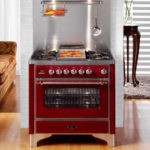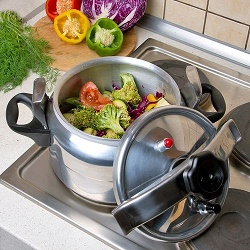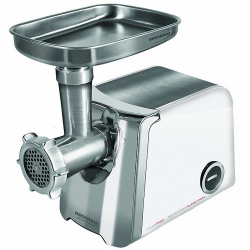Induction vs gas stove
Despite the large amount of information and a huge selection of models, consumers often wonder what is better to buy, a gas stove or induction? Today, gas models are still considered the most popular use case. In fact, cooking on such kitchen appliances turns out to be more economical, since gas - cheap fuel and does not involve payment of large bills. Use of electric stove will cost the family much more. But does this also apply to induction devices? It should be understood that to choose the best option, which stove is better, it is necessary to pay attention to all the advantages and disadvantages of the models, and not just take into account the cost of maintenance.

Content
Features of the induction cookers
If everything is clear about gas models, then many people have questions regarding the principle of operation of induction equipment. Why for such a plate is needed special dishesHow long does it cook and how does it differ from a conventional electric cooktop? In fact, it is an electric stove with a ceramic hob. But, in contrast to the usual electric stove with the same surface, instead of the usual cast-iron heating elements in the form of a spiral or a corrugated tape it uses powerful inductors.
The main difference is the method of heat generation. In conventional models of electric stoves, the temperature of the heating element first rises, then the surface (the burner itself) is heated, then the dishes, and its contents are already from the dishes. In induction, the current occurs when high frequency magnetic field (20-100 kHz): copper induction coils start all the work. Here the stage of heating of the burner is bypassed - the interaction takes place with the disks of the bottom of the dish. As a result, they heat up to a user-defined temperature much faster, while the burner itself does not get hot.
The surface of such a plate does not heat up more than 50 degrees (from the dishes itself),and completely cools down in less than 10 minutes, when it takes about half an hour to cool down the gas burners.
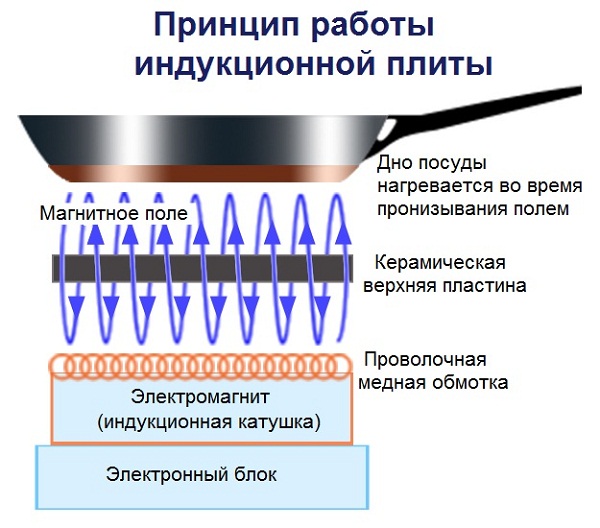
Of course, the cost of such a variant of cookers is higher, which is quite logical. They need high power, which is due to the use of electricity. Summarizing, we can highlight the following advantages of induction equipment:
- the heating of dishes, and accordingly its contents, is faster than with gas;
- no soot or soot is formed on the dishes, furniture, and nearby equipment;
- care for such a panel very simple;
- when cooking the burner itself does not heat up, which excludes the possibility of burns;
- allows you to accurately set the heating mode.
Disadvantages of induction plates:
- high cost of such equipment;
- For such a hob, you need special dishes with a thickened bottom that magnetise;
- the glass-ceramic surface itself is afraid of punctures.

Pros and cons of gas devices
We will not describe the principle of the gas stove: it is known to everyone. It is worth considering that the possibility of using such devices limited to gas line in the House.We emphasize the main points why these plates are widespread.
- They are much cheaper. Even the latest model of the gas stove will be much cheaper than the new-fashioned induction option.
- Saving family budget during operation - this is the main advantage of gas appliances. As mentioned earlier, gas is consumed much more slowly than electricity, and is cheaper. Therefore, when it comes time to pay the bill, this plus will be obvious.
- Fits any utensils. There is no need to change it when buying a new plate.
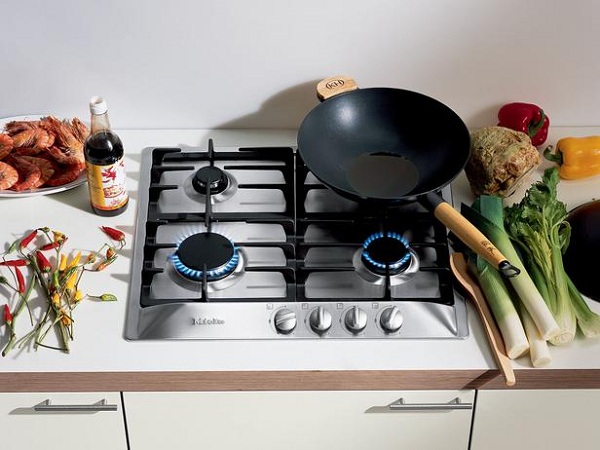
Speaking about the visible merits of the gas stove, the list is not so long. If we talk about the minuses, their number exceeds the pros.
- Explosion hazard Failure to observe safety precautions or damage to the equipment may result in leakage.
- In the case of redevelopment, will have to legitimize it in the relevant authorities.
- Caring for her more difficult.
- If we compare the efficiency, the gas stove with 50%, is inferior to induction, in which this indicator tends to 95%.
- In the absence of exhaust fumes, soot and carbon deposits form on the adjacent equipment and objects.
Additional functionality
Considering the additional possibilities of the plates, we can immediately say that the induction becomes the undoubted winner in the criterion under consideration.. For example, the burners of the new-fashioned version are equipped with special sensors that recognize whether there is water on the stove - if necessary, they are automatically turned off. In the event that the pan was removed from the stove, but the person forgot to turn off the hotplate, she also shut down itselfthat increases security.
Induction rings are designed exclusively for heating the bottom of dishes and in the appropriate diameter, so the electricity is not wasted. Most models have an auto-off timer. The user can set a task for the cooker, for example, to cook soup for a certain time. Once timer end - the burner turns off.
Speaking of use of gas stovesthen they do not own such an arsenal of fashionable functions. But still modern models have some useful features, such as electric ignition and gas control. Electric ignition gives a spark that allows you to turn on the burner without the use of matches or electric lighters.
It should be noted that it works from a standard 220V outlet. Therefore, to use such a function, a free outlet should be located near the stove.
BUT gas control will shut off the gas supply if it is extinguished due to a draft or water running out of the pan or kettle.
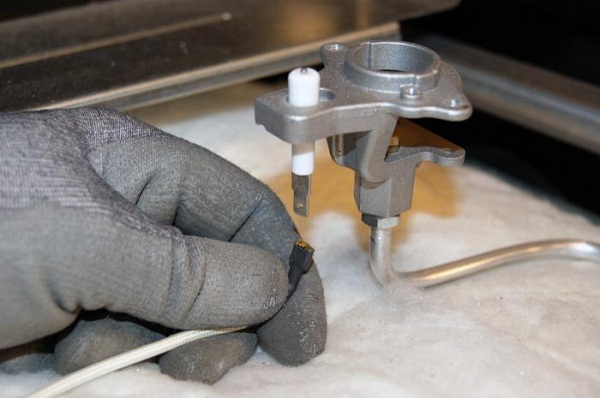
Electric ignition burner
Which option is safer
Undoubtedly, the induction panel also becomes a winner in the issue of safety. Although in some models of gas stoves there is gas control, in certain situations such protection is not enough. If a person puts on a kettle and forgets about it, the water will not always boil away - then such a function will be simply useless. The dishes will melt, which may cause a fire. At using induction technology this option is simply excluded. It always provides control over the use, and even if the owner forgets to turn off the burner, the panel will do it on its own.
Unfortunately, when cooking some dishes, this function turns out to be irrelevant, but such a nuance can always be tolerated if we compare it with our own safety.
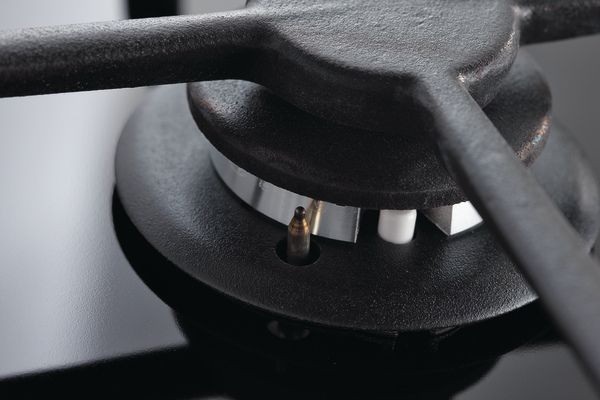
Gas control
Which slab to prefer
Nowadays, in the houses to which gas is supplied, the majority of families use gas options, since such equipment significantly saves the family budget. But owners of modern induction models have more features. Summarizing all the technical characteristics of the induction and gas stoves, we can draw the following conclusions.
- By cost in service, induction cookers occupy an intermediate position between the gas and electric models. The first option turns out to be the most economical, because it works on gas, and the electric model of the stove turns out to be the most expensive, therefore, every day it continues to lose its popularity. Although considering that, due to the special principle of operation, the copper coils heat the dishes and the contents in it much faster than gas, it can be argued that the induction stove or the gas panel is more economical in terms of operation.
- According to the functional more opportunities for models that operate on the principle of induced eddy current, although modern gas stoves are equipped with leakage protection (gas control) and built-in electric ignition element, which prevents the possibility of burning a flame when the burner is turned on.
Comparing all the advantages and disadvantages, it is safe to say that induction is superior to gas equipment. Despite the fact that the second option is more economical, yet security, as well as new opportunities, will eventually take their pedestal and be used in most homes.

/rating_off.png)






